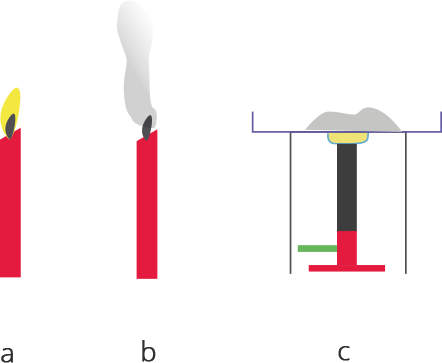Class 6 Science NCERT Exemplar Solutions Chapter 6 Changes Around Us
FAQs on NCERT Exemplar for Class 6 Science Solutions Chapter 6 Changes Around Us
1. From where I can easily download exemplar solutions for science class 6th changes around us chapter?
You can download NCERT Exemplar solutions from the Vedantu website for chapter Changes Around Us. The booklet includes answers to all the questions of the exemplar book with easily understandable steps that will help students in grasping conceptual and analytical abilities. In this chapter, exemplar books provide in-depth concepts to changes that surround our life and students very easily understand all concepts by themselves.
2. What are the most important topics to cover in the Changes Around us chapter?
All the topics mentioned in the chapter Changes Around Us are equally important from an exam point of view. However, students should be clear with the two most important topics that are Reversible Changes and Irreversible changes around us. The chapter also includes different concepts to explain these two changes in detail. So in exams, many true/false and statement-based questions come from this chapter. So, give equal attention to all the topics.
3. Is it mandatory to prepare both NCERT and NCERT Exemplar books for exams?
If you are a student of the CBSE board then yes it is important to prepare both NCERT and NCERT Exemplar books for your exams. NCERT textbook will include all the fundamental key concepts of the subject. On the other hand, the exemplar books are designed to provide every student with appropriate in-depth information in a simple and easy language like that of NCERT.
4. What type of questions are given in class 6 Science exemplar books?
NCERT Exemplar was mainly introduced to the curriculum to provide students with an enhanced ability to solve high-order thinking questions. Therefore all the questions that are included in class 6 science exemplar books are more associated with a concept where students have to apply their higher-order thinking skills to find solutions to the problems. In case of any difficulty, students can also refer directly to NCERT Exemplar solutions by Vedantu.
5. Do we have questions for all class 6 science chapters in science exemplar books?
Yes the class 6 science exemplar book includes in-depth questions for all the chapters of the book. Every chapter mentioned in the science exemplar book makes students aware of different plant and animal anatomies. They also learn about the environment and its components. In short, science exemplar books contain all the notes, questions, tests, and value-based questions that serve the purpose of providing students in-depth knowledge is fulfilled.

























